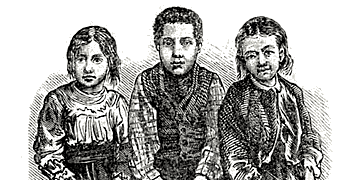The price of migration
“There is no piece of philanthropic work that accomplishes so much good at so little cost as does the emigration.”
William Quarrier 1882
In the 1890s it cost £12 a year to keep a child in an institution. It cost one payment of £15 to migrate that child (estimated figures).
Reasons for migration after 1869

- Desperate economic conditions in the United Kingdom: cholera, bad harvests, unemployment
- Expansion of the British Empire: Canadian confederation 1869
- Beliefs that children from marginalized communities were better separated from poor parents
- Middle class society felt threatened by ‘the verminous ill-fed hordes’ [Samuel Smith MP]
- A romantic longing for simple rural life as seen in Canada
- A belief that Protestant values were preserved and honoured, especially in Ontario
- Migration eased the pressure on overcrowded poorhouses and industrial schools
- Many Scottish families had already emigrated to Canada
- Migration of a child cost the equivalent of only one year’s poor law relief
Acts of the Privy Council

The ‘legal’ beginning of child migration was in 1620 when the Privy Council sanctioned the despatch of ‘recalcitrant’ children:
“We are informed that the City of London, by Act of Common Council, have appointed one hundred children out of the multitudes that swarm in that place, to be sent to Virginia, there to be bound apprentice … there are, among their numbers divers children unwilling to be carried thither, and that the City want authority to deliver, and the Virginia Company to receive and carry these persons against their will. We authorise and require the City to take charge of that service to transport to Virginia all and every of the aforesaid children.”
Acts of the Privy Council 1620